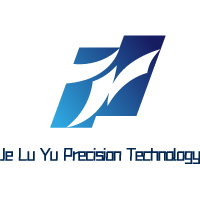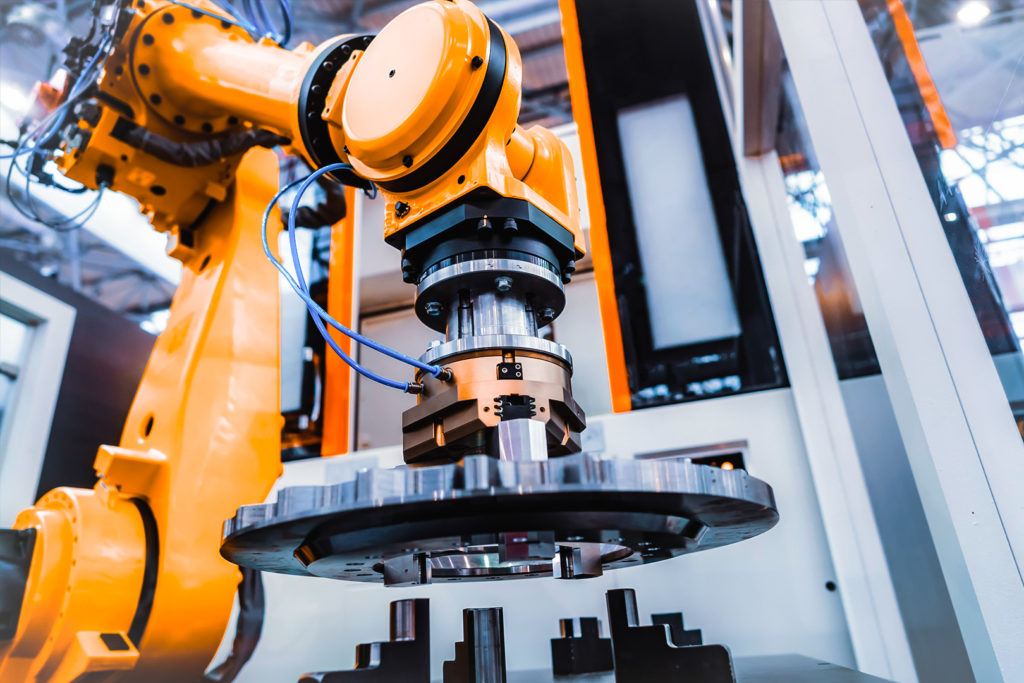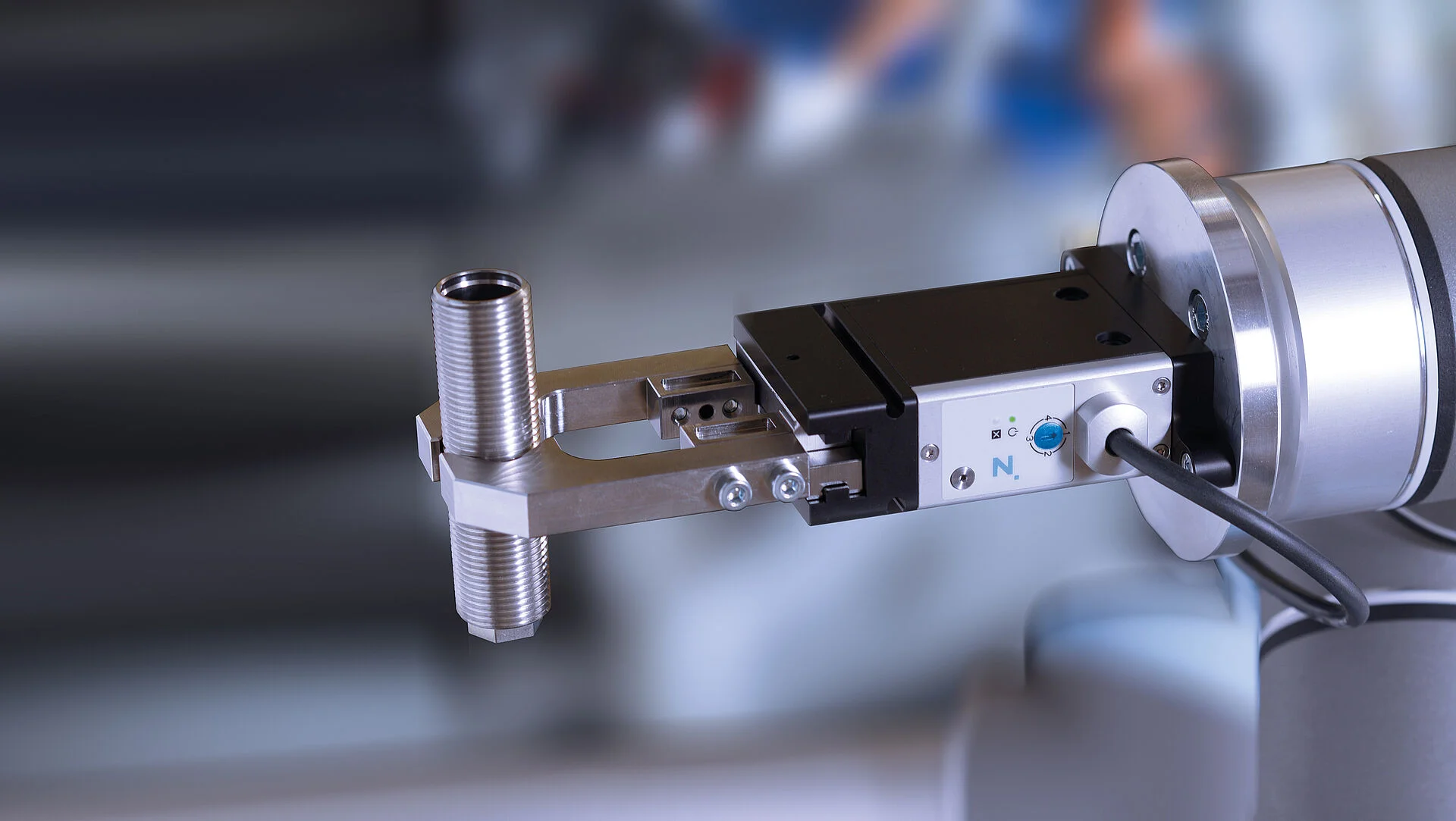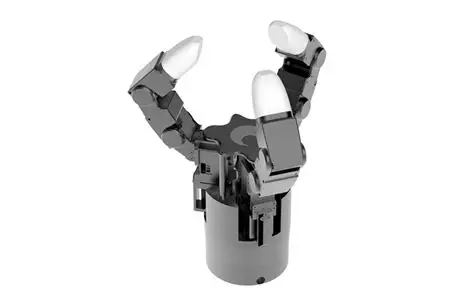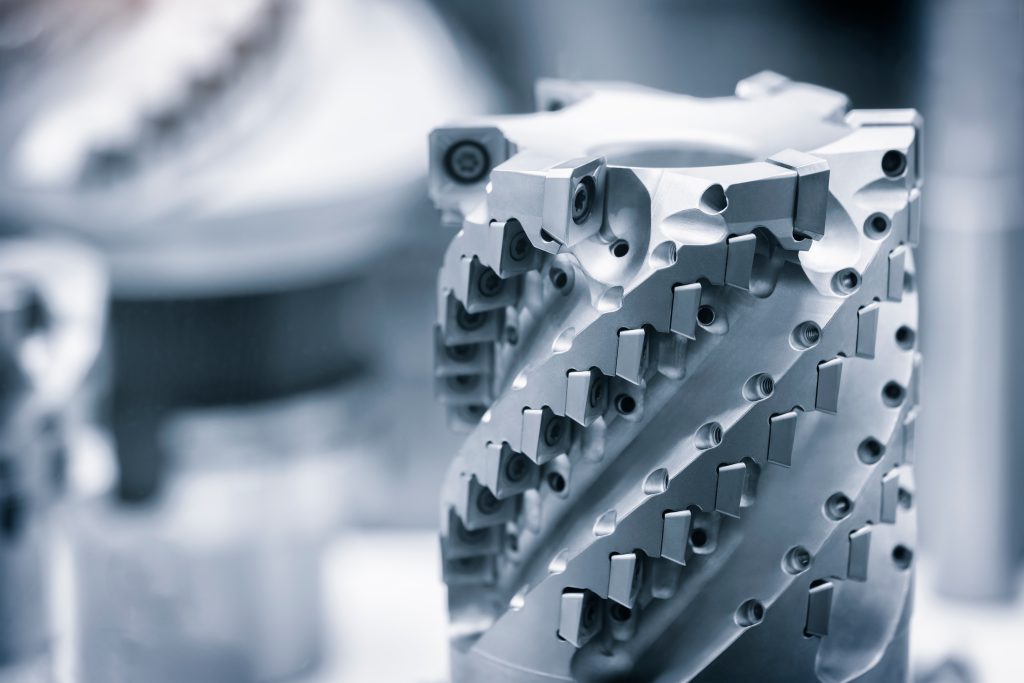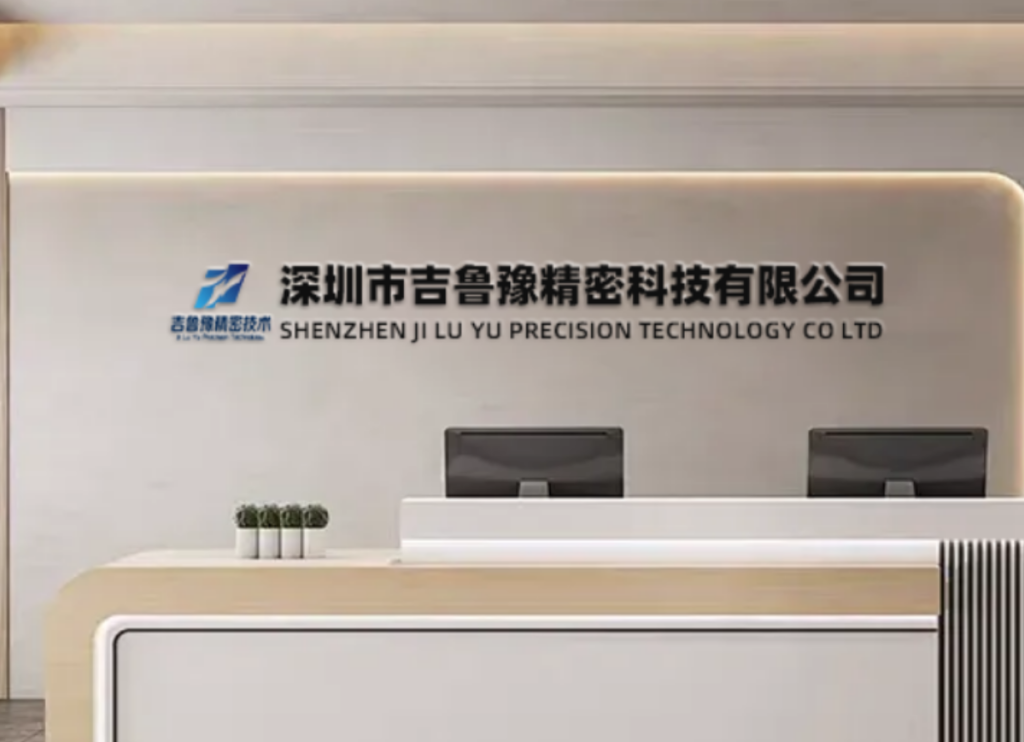The Critical Interface: Mastering End-Effector Selection for CNC Machining Automation Excellence
In the realm of advanced CNC machining, where spindle accuracy reaches micrometer levels and surface finish specifications demand nanometer-scale control, the importance of End-Effectors often represents the decisive factor between automated success and operational failure. These crucial interface components—the physical connection between robotic systems and manufactured parts—have evolved far beyond simple mechanical clamps into sophisticated engineered systems that directly impact manufacturing efficiency, component quality, and process reliability. At JLY Precision Technology, our extensive experience in precision manufacturing has revealed that optimal End-Effectors selection and integration separates elite machining operations from merely competent ones.
This comprehensive analysis delves into the engineering considerations, technological advancements, and strategic implementation methodologies for End-Effectors in modern CNC machining environments. We will examine the complete ecosystem of gripping technologies, from fundamental mechanical principles to advanced sensor-integrated systems, providing a detailed framework for maximizing automated manufacturing performance.
The Strategic Significance of End-Effectors in Precision Manufacturing
End-Effectors represent the critical transition point between digital instruction and physical execution in automated machining systems. Their performance characteristics directly influence multiple aspects of manufacturing operations:
-
Process Stability and Vibration Control: The dynamic interface between End-Effectors and workpieces directly affects machining vibration patterns. Improperly designed gripping systems can introduce harmonic oscillations that degrade surface finish, accelerate tool wear, and impact dimensional accuracy—particularly critical in high-speed machining operations exceeding 15,000 RPM.
-
Thermal Management Considerations: During extended machining cycles, thermal expansion differentials between workpiece and End-Effectors can introduce micrometer-scale dimensional drift. Advanced systems incorporate thermal compensation strategies and materials with matched coefficients of thermal expansion to maintain positioning accuracy throughout production cycles.
-
Geometric Accessibility Optimization: Complex multi-axis machining operations require strategic End-Effectors design to minimize toolpath interference while maintaining adequate clamping force. This involves sophisticated clearance analysis and occasionally necessitates active or passive repositioning during machining sequences.
-
Changeover Efficiency Metrics: In high-mix manufacturing environments, End-Effectors quick-change systems and adaptable gripping methodologies directly impact operational agility. Reduction in changeover time from hours to minutes represents a significant competitive advantage in prototype through mid-volume production scenarios.
Technical Taxonomy: End-Effectors Classification and Operational Principles
The engineering landscape of End-Effectors encompasses multiple technologies, each with distinct operational characteristics and application suitability:
1. Mechanical Gripping Systems
-
Angular Gripping Mechanisms: Utilize wedge or cam actions to convert linear motion into perpendicular clamping force, ideal for applications requiring high force density within compact envelopes.
-
Parallel Motion Systems: Employ linkage mechanisms or gear-driven approaches to maintain jaw orientation throughout actuation range, essential for precision positioning applications.
-
Collet-Based Compression End-Effectors: Provide uniform radial compression for cylindrical components, offering exceptional concentricity preservation between handling and machining operations.
2. Vacuum-Based Handling Systems
-
** Bernoulli Non-Contact Principles:** Utilize high-velocity air flow to create low-pressure zones for handling delicate or highly finished surfaces without physical contact.
-
Multi-Zone Vacuum Arrays: Incorporate independently controlled vacuum sectors to accommodate curved or irregular surfaces while maintaining adequate holding force distribution.
-
Porous Media Vacuum Systems: Employ sintered materials to distribute vacuum across large areas for handling porous or textured materials unsuitable for conventional suction cups.
3. Advanced Actuation Technologies
-
Piezoelectric Micro-Positioning End-Effectors: Deliver nanometer-scale positioning capability for ultra-precision alignment applications, particularly in optical and semiconductor component manufacturing.
-
Phase-Change Gripping Systems: Utilize materials that transition between rigid and compliant states through thermal, magnetic, or electrical stimulation for handling extremely fragile or complex geometries.
-
Electropermanent Magnetic Systems: Combine permanent magnets with electrical pulses to achieve secure holding without continuous power consumption, ideal for safety-critical applications.
Engineering Selection Methodology: Matching End-Effectors to Application Requirements
Selecting optimal End-Effectors requires systematic analysis of multiple technical parameters across workpiece characteristics, process requirements, and operational constraints:
Workpiece Analysis Factors:
-
Material Properties: Ultimate tensile strength, Young’s modulus, hardness, and surface roughness dictate maximum permissible clamping pressures and required interface materials.
-
Geometric特征: Primary and secondary datums, feature accessibility, wall thickness variations, and critical tolerance zones influence gripping strategy and contact point distribution.
-
Mass Properties: Component weight, center of gravity location, and moment of inertia determine necessary clamping forces and stability requirements.
Process Requirement Considerations:
-
Machining Forces: Based on material removal rates, cutter geometry, and engagement strategies to ensure static and dynamic stability throughout operations.
-
Thermal Environment: Accounting for cutting fluid presence, machining-generated heat, and ambient temperature variations affecting dimensional stability.
-
Accessibility Requirements: Clearance analysis for multi-axis toolpaths, coolant delivery systems, and in-process measurement probes.
Table 1: End-Effectors Selection Matrix for Common Machining Scenarios
| Application Scenario | Recommended End-Effectors Type | Critical Design Parameters | Potential Limitations |
|---|---|---|---|
| Thin-Walled Aerospace Structures | Adaptive Vacuum Array with Pressure Regulation | Distributed force < 2 PSI, compliant sealing elements | Limited suitability for highly contoured surfaces |
| Medical Implant Components | Micro-Mechanical Grippers with Force Monitoring | Sub-Newton force control, certified biocompatible materials | Lower throughput compared to conventional systems |
| High-Speed Aluminum Machining | Hydraulic Expansion Mandrels | Balanced rotational capability > 12,000 RPM, thermal stability | Component geometry must accommodate internal expansion |
| Composite Panel Processing | Electropermanent Magnetic Chucks | Field strength uniformity > 0.5 Tesla, rapid switching capability | Exclusive to ferromagnetic component materials |
| Prototype/Rapid Changeover | Modular Pneumatic Systems with Quick-Change Interface | < 30-second changeover capability, position repeatability < 0.01mm | Compromise between flexibility and optimal performance |
Integrated Sensing and Control Systems for Advanced End-Effectors
Modern high-performance End-Effectors incorporate multiple sensing modalities to provide real-time process feedback and enable adaptive control strategies:
-
Distributed Force Sensing: Matrix-based piezoresistive or capacitive sensors mapping pressure distribution across gripping surfaces to detect misalignment, component slippage, or excessive clamping force.
-
Contact State Monitoring: Optical, inductive, or mechanical micro-switch systems verifying proper workpiece acquisition, seating against datums, and presence throughout machining cycles.
-
Condition Monitoring Integration: Vibration analysis, temperature sensing, and cycle counting for predictive maintenance planning and detection of performance degradation before quality impact.
-
Closed-Loop Force Control: Regulating applied force based on real-time feedback to accommodate material variations, thermal expansion, and tool wear compensation requirements.
Case Studies: End-Effectors Engineering Solving Complex Manufacturing Challenges
Case Study 1: Turbine Blade Root Form Machining Solution
-
Challenge: Precision machining of nickel alloy turbine blade root forms requiring uninterrupted toolpaths across multiple surfaces while maintaining profile tolerances of 0.005mm. Conventional vises introduced distortion and limited tool accessibility.
-
Solution: JLYPT engineered a custom multi-axis End-Effectors system incorporating hydraulic expansion technology with precisely contoured form jaws. The system provided uniform radial compression while maintaining complete geometric accessibility for 5-axis simultaneous machining.
-
Result: Achieved profile tolerance consistency of 0.003-0.004mm across production batch, eliminated rework previously required for vise-induced distortion, and reduced cycle time by 22% through optimized toolpaths.
Case Study 2: Carbon Fiber Reinforced Polymer (CFRP) Panel Trimming
-
Challenge: High-speed trimming of CFRP aerospace panels with dimensional stability requirements of 0.1mm/m while preventing delamination, fiber pull-out, and matrix damage at cut lines.
-
Solution: Developed a vacuum-based End-Effectors system employing Bernoulli non-contact principles with peripheral mechanical locators. The system provided secure holding without surface contact in critical machining zones while maintaining positional stability against cutting forces.
-
Result: Eliminated machining-induced delamination entirely, maintained dimensional stability within 0.08mm/m, and enabled processing of pre-finished panels without protective interface materials.
Case Study 3: Medical Device Micro-Components Assembly
-
Challenge: Automated assembly of titanium and ceramic medical device components with feature sizes below 0.5mm, requiring alignment accuracy of 0.005mm while preventing surface contamination or microscopic damage.
-
Solution: Implemented piezoelectric micro-positioning End-Effectors with vacuum extraction capabilities for handling minute components. The system provided nanometer-scale positional adjustment with continuous particulate removal through integrated vacuum channels.
-
Result: Achieved assembly yield improvement from 65% to 98.5%, eliminated microscopic contamination previously detected only at 200x magnification, and reduced assembly cycle time by 40% through elimination of manual intervention.
Future Development Trajectories in End-Effectors Technology
The continuing evolution of End-Effectors technology focuses on several key innovation vectors:
-
Adaptive Morphology Systems: End-Effectors capable of dynamically modifying their physical structure and compliance characteristics to accommodate component variations and optimize force distribution throughout machining sequences.
-
Integrated Metrology Functions: Incorporating non-contact measurement capabilities directly within End-Effectors systems to perform in-process verification of feature location, dimensional accuracy, and surface quality without separate inspection operations.
-
Cognitive Gripping Algorithms: Implementation of machine learning systems that autonomously optimize gripping parameters based on historical performance data, material behavior models, and real-time process feedback.
-
Energy-Autonomous Operation: Development of self-powered End-Effectors systems utilizing energy harvesting from vibration, thermal gradients, or other ambient sources to enable cordless operation and simplified integration.
Implementation Methodology: Integrating Advanced End-Effectors into Manufacturing Operations
Successful implementation of optimized End-Effectors systems follows a structured engineering approach:
-
Comprehensive Process Analysis: Detailed evaluation of component geometries, tolerance requirements, material characteristics, and production volume targets.
-
Technology Selection Framework: Systematic matching of End-Effectors technologies to specific application requirements using weighted decision matrices.
-
Prototyping and Validation: Physical testing of selected systems using production-representative components and machining conditions.
-
Integration and Documentation: Seamless incorporation into manufacturing systems with comprehensive documentation of operating parameters, maintenance requirements, and performance specifications.
-
Continuous Improvement Cycle: Ongoing monitoring of system performance and incremental optimization based on production data analysis.
At JLY Precision Technology, our structured implementation methodology ensures that End-Effectors solutions deliver maximum operational benefit while maintaining compatibility with existing manufacturing systems and quality standards.
Conclusion: Strategic Investment in End-Effectors Excellence
The selection and implementation of advanced End-Effectors represents one of the most impactful investments in automated machining system performance. Beyond mere component handling, these systems directly influence machining accuracy, surface quality, process reliability, and operational flexibility. In an increasingly competitive manufacturing landscape, excellence in End-Effectors engineering provides a tangible differentiation that impacts both product quality and production economics.
At JLY Precision Technology, our expertise extends beyond conventional machining operations to encompass the complete manufacturing ecosystem, including the critical interface between automation systems and manufactured components. Our engineering-driven approach to End-Effectors selection and optimization ensures that our clients benefit from integrated manufacturing solutions rather than isolated machining capabilities.
Ready to optimize your manufacturing automation through advanced End-Effectors technology? Contact JLY Precision Technology today to discuss how our systematic approach to End-Effectors integration can enhance your machining precision, efficiency, and reliability across your production operations.
